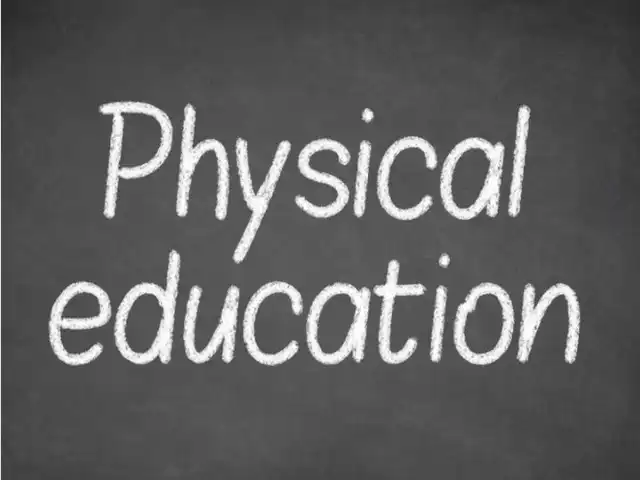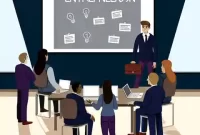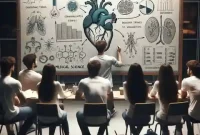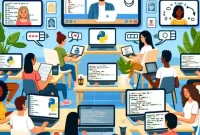Physical education has many purposes. It will help to improve students’ physical health and wellness, along with their mental health. It can also help them become more confident in their abilities and skills, which can lead to a better future.
Physical education is an integral part of our lives from childhood through adulthood. It helps us develop physical skills, such as coordination, balance, stamina , versatility, and power; it helps us learn regarding our body, and it helps us stay healthy.
The 10 Best Practices for Successful Physical Education
The 10 Best Practices for Successful Physical Education:
- Contributing to a positive, safe and inclusive environment
- Establish clear expectations of student behavior and consequences for non-compliance
- Collaborate with parents and teachers to establish curriculum and instructional goals
- Engage students in decision-making processes
- Develop an individualized plan for each student
- Integrate technology into the learning process
- Use a variety of teaching strategies to reach all learners
- Provide opportunities for students to practice skills in real-life settings
- Engage in active learning strategies that require movement and engagement
- Use assessment methods that provide feedback on progress
What Does Mastery Look Like in a Physical Education Program?

Mastery is a process of learning how to perform something, and anyone may achieve this. The accumulation of information and abilities allows one to achieve a high level of performance in a particular area.
Mastery in physical education is usually divided through goal setting, self-evaluation, and feedback. Goal setting helps students set achievable goals for themselves that they can achieve over time. Self-evaluation helps students know their strengths and weaknesses to improve their skills in areas where they need more practice or help. Feedback from coaches or teachers allows the student to identify areas for improvement with specific goals in mind to progress towards reaching mastery levels.
Mastery levels are divided into novice, intermediate, and advanced mastery levels. The novice level is the first step to mastering a skill.
What are the benefits of physical education?
Physical education is an important part of a child’s life, and it helps them develop physically, socially, and emotionally.
Physical education can help children develop physically, socially, and emotionally. Here are the benefits of physical education:
- Physical fitness: physical activities such as running, jumping, and dancing improve the body’s cardiovascular and respiratory systems. They also strengthen muscles and bones.
- Social development: playing sports with others develops friendships that last a lifetime. They also teach children to cooperate with others to achieve a goal or win a game.
- Emotional development: playing sports helps children learn how to control their emotions to avoid frustration or anger when they lose or make mistakes
- Self-confidence: playing sports builds self-confidence in children because it teaches all of them to become physically active and independent, which usually is a characteristic that is beneficial for any individual
The history of physical education
Physical education is an aspect of education that has been practiced since the beginning of time. It is a system that teaches people how to maintain their health, improve their skills and be physically fit.
The history of physical education is long and complicated. It traced back to ancient Greece, where the Greeks were the first to use physical activities for educational purposes, and the Greeks also introduced gymnastics into their curriculum.
Physical education in ancient China was based on Taoism and integrated “qi gong” (a type of breathing workout) and martial arts training. In India, physical education has been based on Hinduism and Buddhism with some elements from Islam. The Indian practice included yoga and meditation exercises for balance, strength, flexibility, concentration, and spiritual development.
What are the different types of physical education?
Physical education is a broad term that refers to the practices and methods used to improve health, fitness, and well-being.
The different types of physical education include:
- Aerobics
- Aquatics
- Athletics
- Dance
- Gymnastics
- Martial arts and combat sports
- Outdoor activities like hiking, camping, rock climbing, etc.
What are the goals of physical education?
Physical education aims to assist kids develop their physical and psychological well-being, and it also teaches them the significance of healthy choices, good nutrition, and social skills.
Physical education can be used for many different reasons. It can teach children about the benefits of remaining fit and healthful, it can help them learn how to live in a society with others, and it can teach them how to make good choices for themselves.
The goals of physical education vary depending on the type of program being taught.
Who are the teachers in physical education?
Teachers in physical education are considered the most influential people in a child’s life, and they’re responsible for teaching and guiding young children to build healthy habits.
Teachers are required to have a bachelor’s degree, an appropriate certification, and experience in teaching. The teacher must also maintain a healthy lifestyle and teach with enthusiasm.
The teacher is the person responsible for making sure that the students learn how to be physically active, which will help them become healthier adults later on.
Where do we learn about physical education?
This is a question that many people ask themselves. If you’re interested in learning about physical education, you should know that the answer is not always easy to find. Most schools don’t teach it, and there are no dedicated courses to learn about it.
However, if you want to learn more about physical education, you can do so through online courses or even books. Most of these courses are offered by universities, which are found on their websites.
Can physical education be helpful in combating depression?
Depression is a mental illness that affects a person’s thinking, feeling, and behavior. It can be caused by many factors such as genetics, life events, and brain chemistry.
The answer to this question is affirmative because physical activity this found to help combat depression. There are many ways that exercise can help people with depression, including improving mood and self-esteem.
Physical education (PE) is an educational course that aims to develop the skills necessary for participation in sports or physical activities. The benefits of PE include improved cardiovascular health, increased bone density, improved muscle strength and coordination, reduced risk of obesity, reduced risk of osteoporosis and other bone diseases, improved cognitive function through increased blood flow to the brain, improved self-esteem, and social connectedness.
How can a person help children build self-esteem?
Self-esteem can be described as a feeling of being worthy and important, or having a positive sense of one’s worth. It can also be described as how you feel about yourself, your life, and your choices.
Some methods to assist kids build self-esteem are:
- When they feel good about themselves, they are more likely to be happy, confident, and creative.
- When they feel good about themselves, they are less likely to engage in harmful behaviors like bullying others or abusing substances.
- When kids feel good about themselves, their parents will be more likely to be happy.
How can you have fun while doing physical activities?
Physical activities are a great way to have fun and stay fit. But it can be hard to find the time to do them because of busy schedules. This is where technology comes in handy.
Many apps can help you get the most out of your workout routine by keeping track of your progress, motivating you, and providing guidance on reaching your goals.
How should physical education be taught in schools?
Physical education is a vital part of the school curriculum, and it teaches children how to be physically active and healthy. But not all schools can provide the best possible physical education.
This article discusses the importance of physical education in schools, how it is taught, and changes.
Physical Education Should Be a Priority in Schools
- Physical education teaches children about the importance of being physically active and the benefits of a healthy lifestyle.
- Physical education is important yet challenging and can be a barrier for students when it comes to achieving their goals. The good news is that using AI assistant technology can help solve these issues within schools.
9 Physical Education Classes You Can Start Teaching Today
Physical education classes are a great way to move your students, work on their motor skills, and build teamwork. You can teach these classes in many ways, but here are some of the most common:
- Gymnastics
This class will work on balance, coordination, and strength.
- Dance
This class is great for the students who love to move and dance to music.
- Soccer
the soccer ball is a must-have item for this class! The students will learn how to kick the ball while working on their balance and coordination skills.
- Bowling/Shooting
This class will help build hand-eye coordination and teach students how to throw a bowling ball or shoot a basketball with accuracy and control.
- Baseball
Baseball is a sport that people of all ages enjoy. It is a great way to get kids active and involved in the game while also teaching them teamwork and sportsmanship.
- Volleyball
Volleyball is a sport that requires skill and finesse. It is a team game, so it cannot be easy to teach the game to those new to it.
- Wrestling
It is an excellent option for students who want to defend themselves and not necessarily be on the offensive. It also helps build self-confidence and strength and teaches students to work together with others.
- Tumbling
This class teaches students how to move gracefully and fluidly. It can help them become better dancers, athletes, or actors because it teaches them how to move their bodies in different ways while maintaining balance.
- Jumping Rope
Jumping rope is a great cardio workout that helps improve cardiovascular endurance, speed, agility, coordination, balance, and flexibility
Conclusion
Physical education is a way to ensure that students are physically fit, healthy, and have good self-esteem.
Physical education has many benefits for children and teens, but the biggest of them all is the fact it is important to their development in other areas.
Physical education also has a huge impact on the mental health of individuals as it can help individuals cope with stress and anxiety levels.


